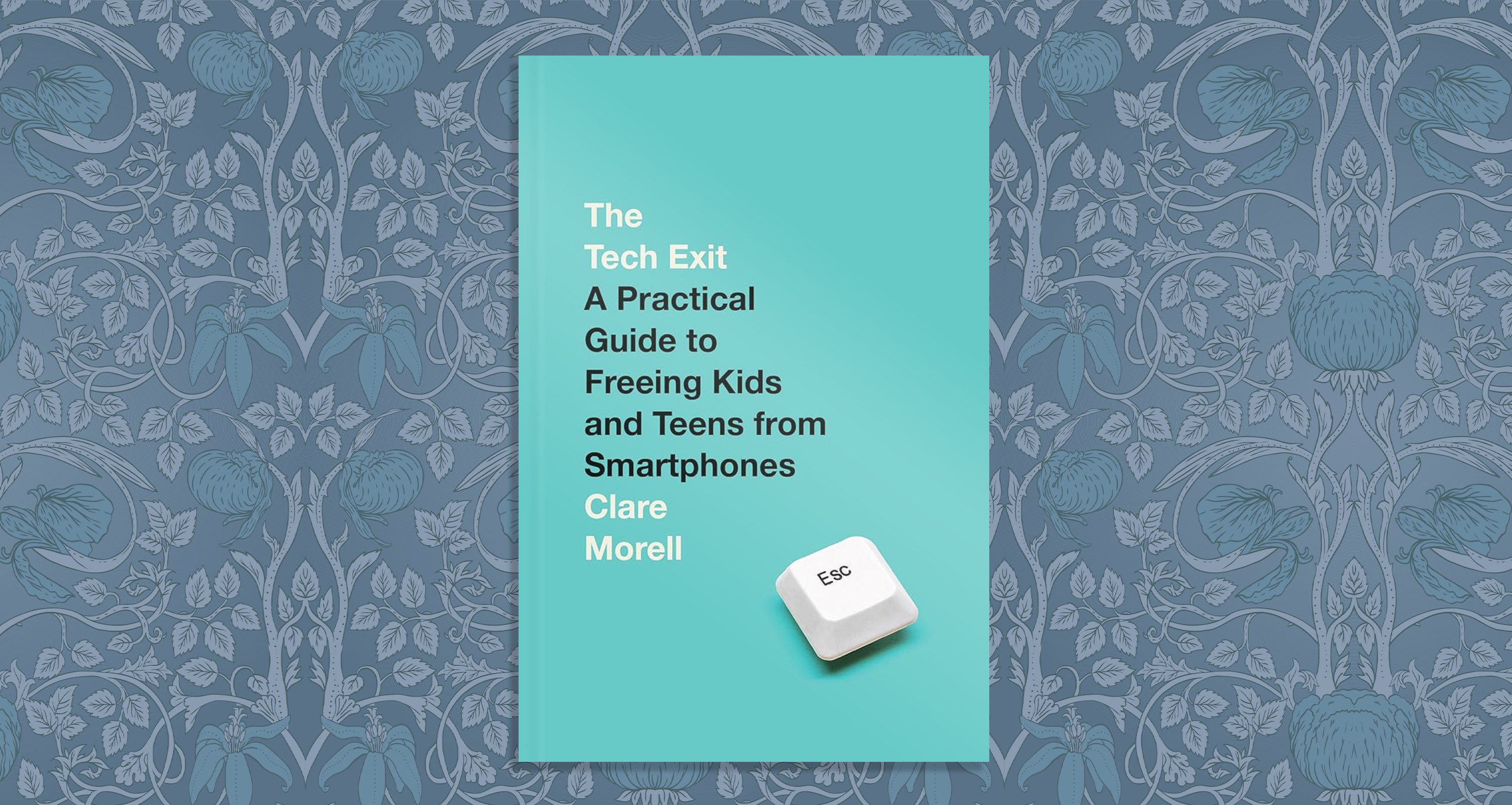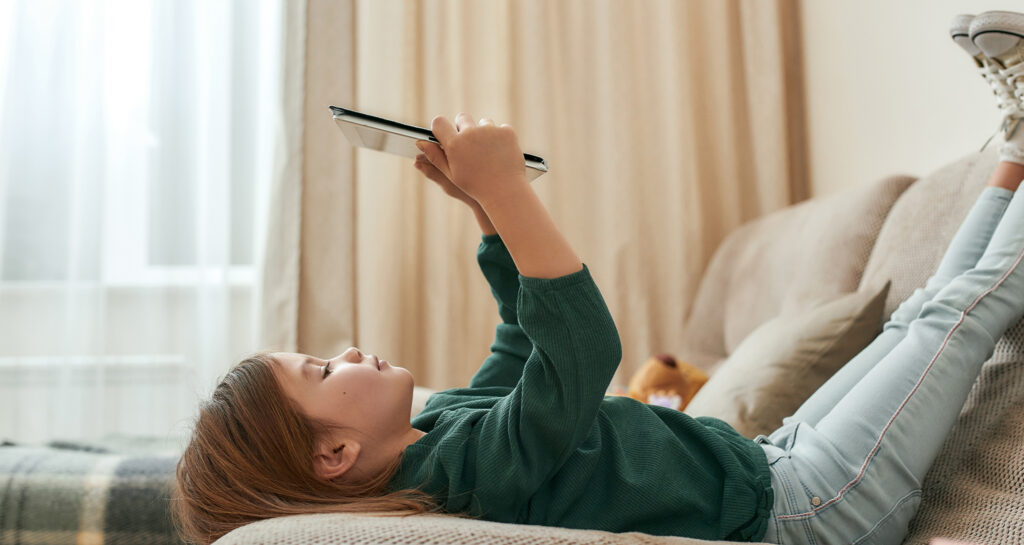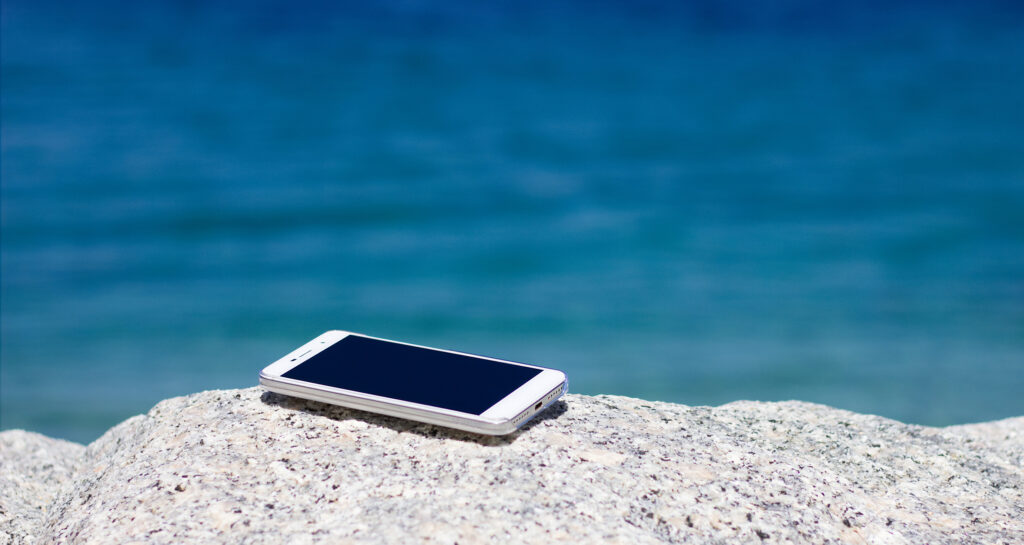Refine Reviews: The Tech Exit
Published on September 1, 2025

“Children in rainsuits and mud boots. The noise of children’s laughter, screams, and cries.”
“While they splash in the mud and we talk about life and parenthood, we serve as examples to one another as we see how our different families live out similar tech-minimalist principles,” Clare Morell writes in her book, The Tech Exit: A Practical Guide to Freeing Kids and Teens from Smartphones.
Forest school is where I met Clare Morell for the first time. The picture she paints in her book is quite accurate – a simple weekly meet-up for mothers and children seeking a life out-of-doors and not behind a screen.
Our conversations were varied, but some of the most animated and enriching centered on our families’ uses of technology. Morell brought an incredible amount of both personal and professional expertise to conversations centered on technology. As a fellow at the Ethics and Public Policy Center, the director of its Technology and Human Flourishing Project, and, most importantly, a mom of three, Morell is passionate about informing and inspiring families to embrace freedom from digital technology.
Having gleaned incredible insights from conversing with her and witnessing how she practiced what she preached in daily life and parenting, I couldn’t pre-order her book quickly enough. After reading The Tech Exit, I had the pleasure of talking with Morell about the advantages of embracing a life of freedom from digital technology, and what that looks like practically.
Both the book and my conversation with Morell reinvigorated my efforts to intentionally distance myself and my children from smartphones and rally with my community to provide our children with a play-based childhood. I believe it will also inspire you.
Here’s a sneak peek into her important work and our conversation.

Harm reduction is not enough
Morell begins her book imploring readers to recognize that harm reduction is a bad policy. Screen-time limits and parental controls simply don’t work, she argues. Morell emphasizes the inaccurate metaphor that “screens are like sugar” — “a treat to be enjoyed with abandon sometimes and consumed in moderation in an otherwise-balanced diet.”
Morell refuses to advocate for moderation where moderation isn’t realistic. “Digital technologies are not like sugar,” she writes. “For the developing brains of children and teens, they are more like fentanyl.”
Morell does not spend much energy attempting to persuade parents that technology is unhealthy and highly addictive for children. That conversation has happened in other eye-opening books, such as The Anxious Generation, by Jonathan Haidt.
Morell is writing for parents who understand the need for a better relationship between their children and technology – parents who don’t want to simply reduce harm, but eliminate it altogether. She is writing for parents who believe we owe our children more than parental controls and screen limits (which, spoiler alert, often don’t work!).
“Screen-time parents,” Morell writes, accept “that screen-based technologies are an inevitable part of childhood” and that parental controls or screen-limits aimed at reducing harm are their only option. The problem with this approach, Morell argues, is that it assumes a complacency when it comes to allowing our children to face any harm at all.
Harm reduction is not good enough for Morell, and it’s not good enough for thousands of families choosing to live as a Tech Exit family.
“The Tech Exit” is a rallying cry for families who refuse to accept the status quo and desire a framework for just how to do that. The book is brimming with research that supports this conviction, as well as sound advice that provides a clear path forward for both families and communities.
What I find most approachable about the book are the multitude of stories from real parents who have had to ask themselves hard questions in their effort to resist technology: But will my child fit in if she is the only one without a smartphone? What about homework that requires internet access? What do I do if he needs an app for sports? Will my daughter feel isolated? How can we possibly be screen-free with these obstacles the world puts in front of us?
Morell champions families who have refused to cower to these obstacles and have instead overcome with strength, good humor, and confidence. Tech Exit families are providing their children with a social and vibrant (arguably, more social and more vibrant) childhood sans smartphones, social media, tablets, and video games. Morell bolsters the reader with the confidence to say if they can do it, maybe we can too.

Fasting from technology
Ultimately, to be a Tech Exit family, Morell recommends “no smartphones, social media, tablets, or video games during childhood.”
So, how do we begin? With fasting.
For families that already have children using technology in this way, Morell says a 30-day detox might be in order. It will be hard, she admits. Expect whining. Expect tears. Expect push back. But then, expect imagination to blossom. Expect more outdoor exploration. Expect deeper friendships. Expect a happier child.
“He doesn’t want to go back to the kid who got in trouble every day for exploding in rage,” said one mother who helped her young child overcome a screen addiction that severely impaired his behavior.
Morell offers a playbook for fasting. Some families may want to take a screen-free trip and return to a house equipped for a reordering of technology boundaries, for example, the video game console tossed and the tablets sold. She lays out detox ground rules, how to prepare, and alternative options for those who can’t commit to a full 30-day detox.

Feasting in the beauty of the world
And after a period of fasting, any liturgical Christian knows it is time for feasting. FEAST is the acronym Morell uses to aid in maintaining the “Tech Exit” lifestyle:
Find other families;
Explain, educate, and exemplify;
Adopt alternatives;
Set up digital and family screen rules;
Trade screens for real-life responsibilities and pursuits.
How to FEAST is the heartbeat of this book, and Morell packs it with stories, statistics, and practical wisdom for creating this lifestyle in your family and community.

Setting boundaries for your family
As a home educator responsible for how and when my children learn to use technology, I was particularly eager for tips on discerning the proper use of screens. I want my children to learn moderation in all things, and this includes technology which, for better or worse, will inevitably be a part of their lives.
In our conversation, I asked Morell if she could recommend a framework for training children to utilize technology for good, while staying far away from its addictive nature. Morell advises parents to think about technology in the dichotomy of creating versus consuming.
“Interactive screens, tablets, and smart phones create dopamine hits that make these technologies more addictive. Even educational games are a type of entertainment that is more addicting and create that craving for more,” she explained. “Letting a child learn to use Microsoft Excel, Microsoft Word, or how to code doesn’t lend itself as easily to addiction because they are creating.” Morell also mentioned families she admired had a family computer available for use as a tool in a public space.
Ultimately, Morell recommends avoiding consumption-based tech use. “When discerning technology that is right for your child, anything involving their own creativity is a better use,” she said. “When they are creating with technology, they are using it as a tool to accomplish a task versus as a passive consumer.”

Find community
So often, parents struggle most with discerning what type of technology is appropriate for their child and the day-to-day monitoring of such boundaries. “Every family will have to draw the lines differently,” Morell explained to me. But despite the different conclusions each family will come to, Morell encourages parents to feel confident in their decisions and to find other like-minded families to stand together in solidarity.
My favorite stories in the book were those of families who used creativity, community, and good old-fashioned fun to fill their children’s days with real-life experiences. From badminton and community dances to adventurous trips and even fixing up a run-down truck, Tech Exit families support their children’s natural curiosities and interests “with the goods of the real world,” which ultimately “helps them lose their taste for the cheap digital substitutes that screens offer.”
To access the full scope of inspiration, wisdom, and practical support on how your family can fast from technology to allow for a more fulfilling and vibrant life, I highly recommend adding Morell’s The Tech Exit to your reading list.




The Tech Exit was a such a good read with helpful solutions to reduce screentime and tech in our lives and for our families.